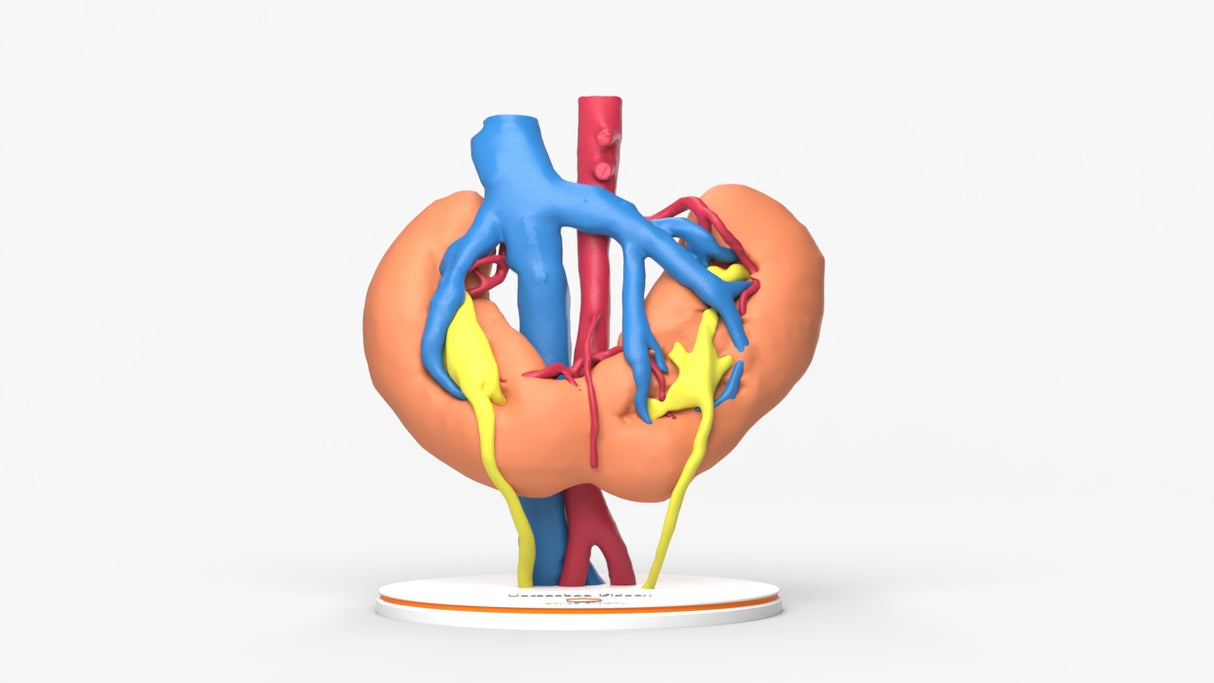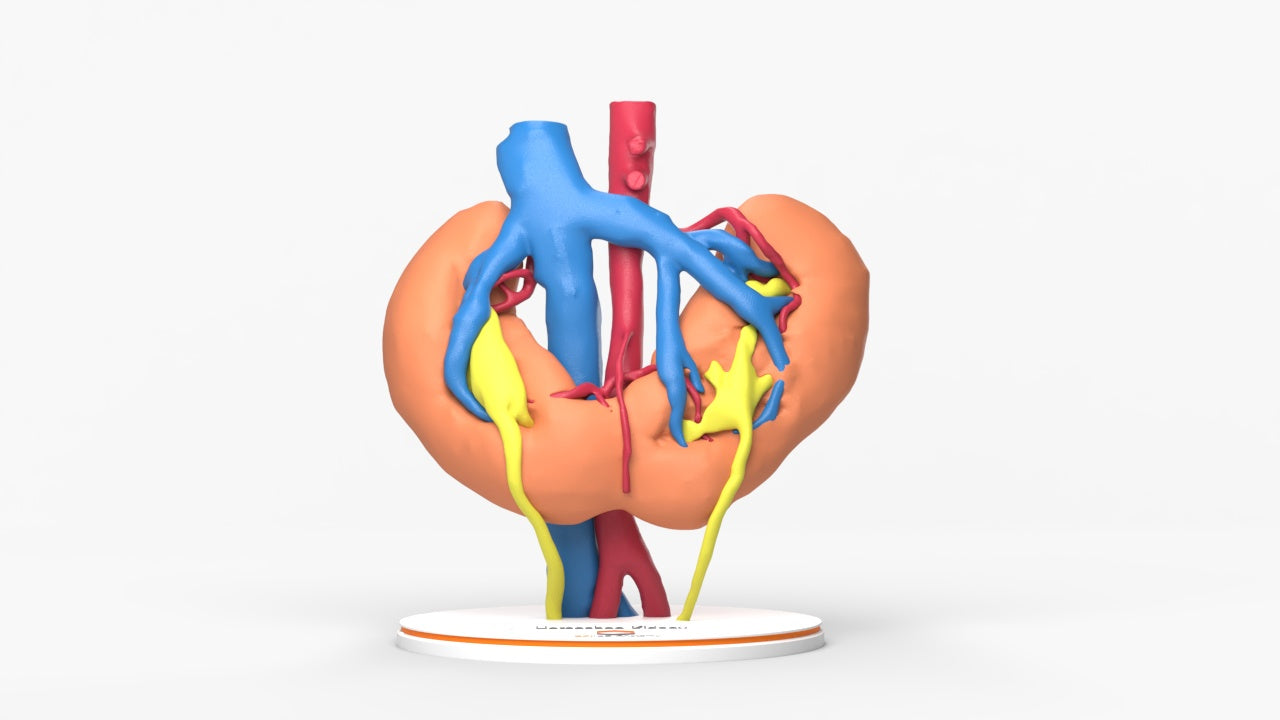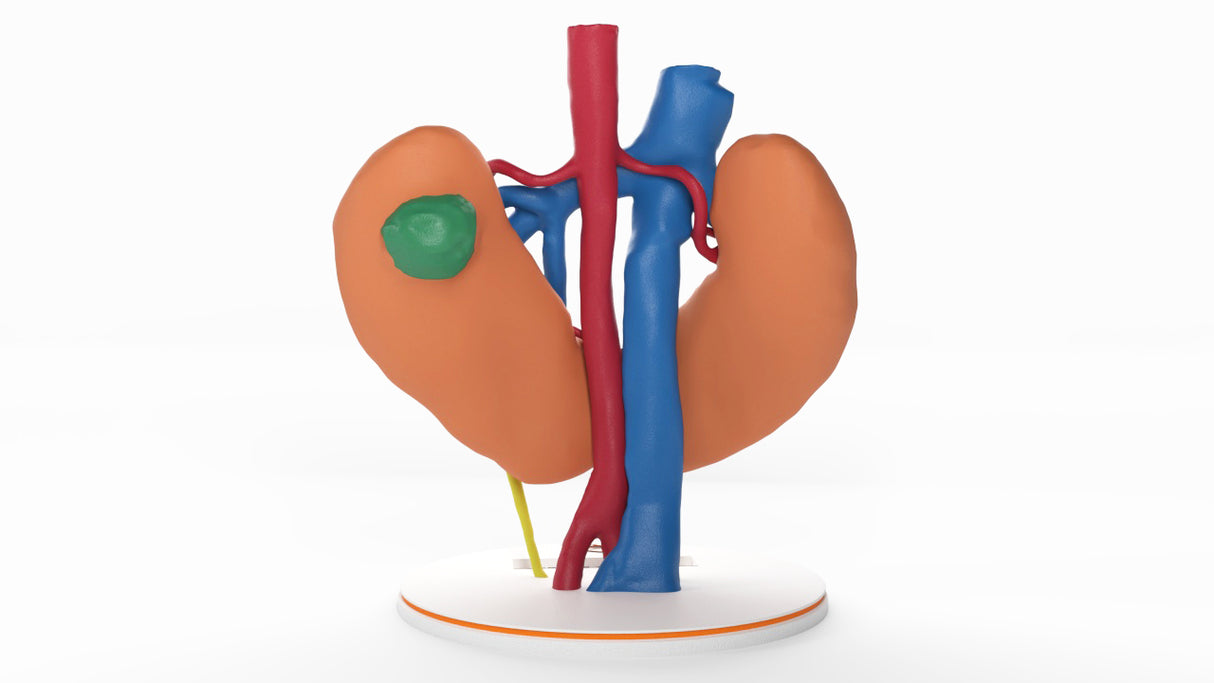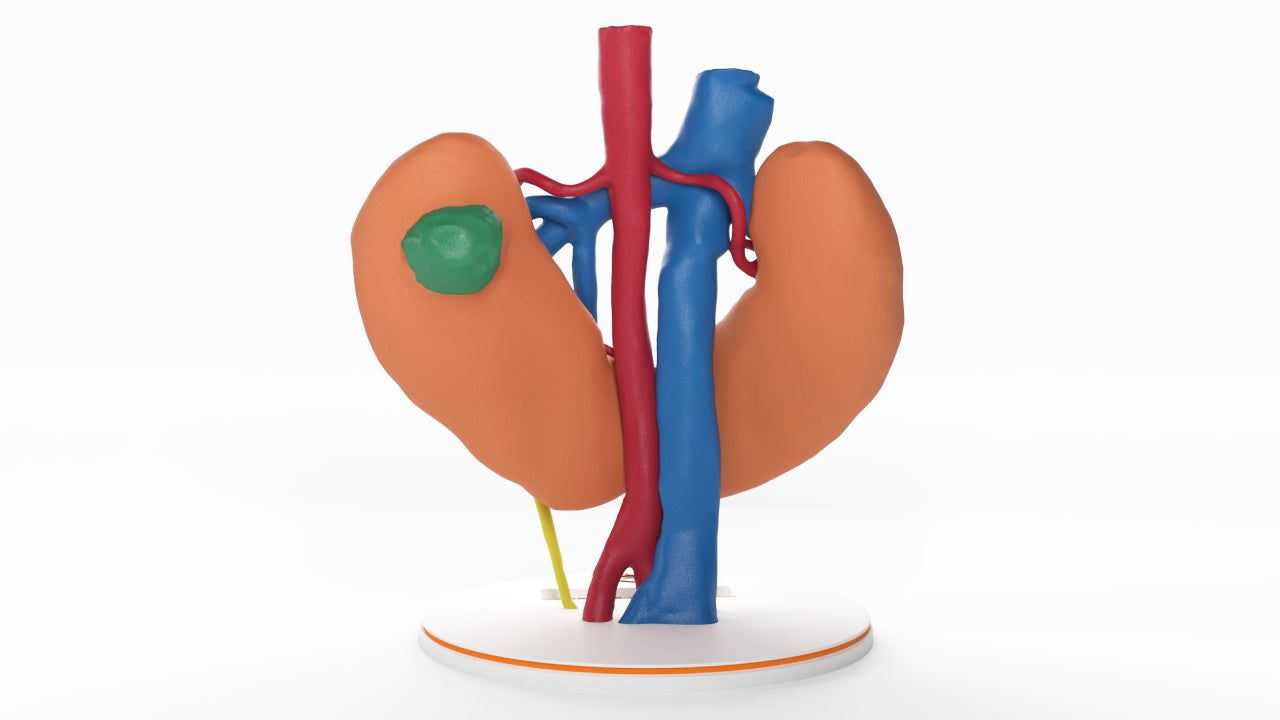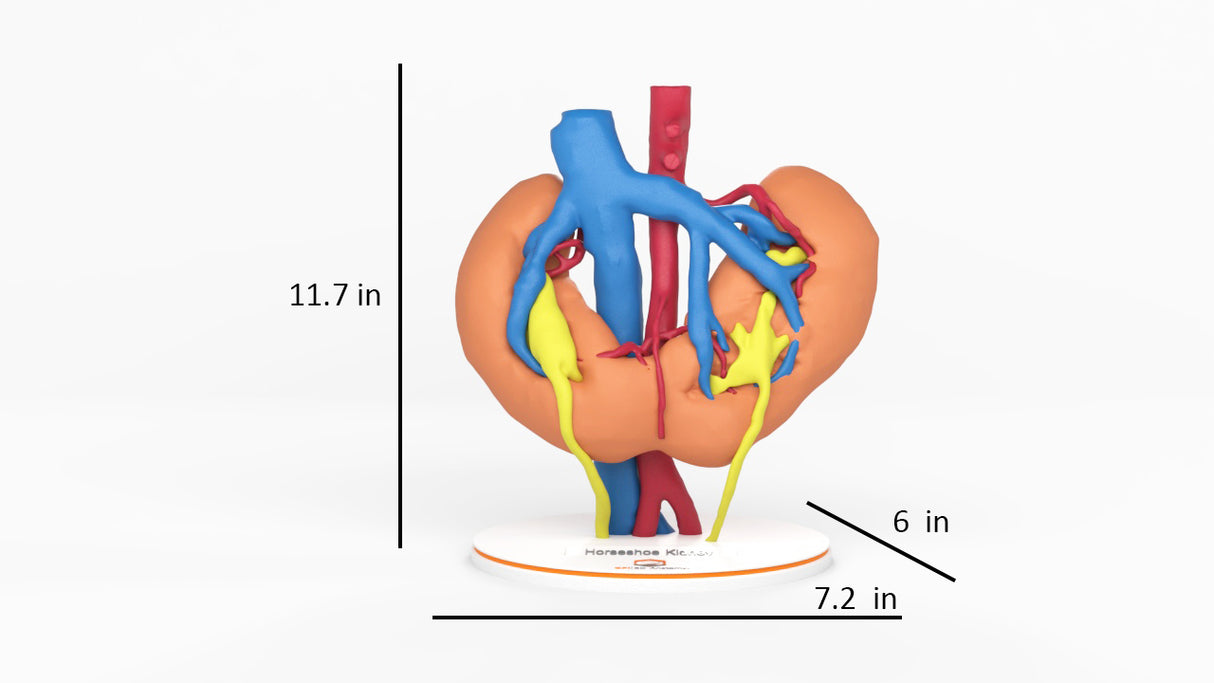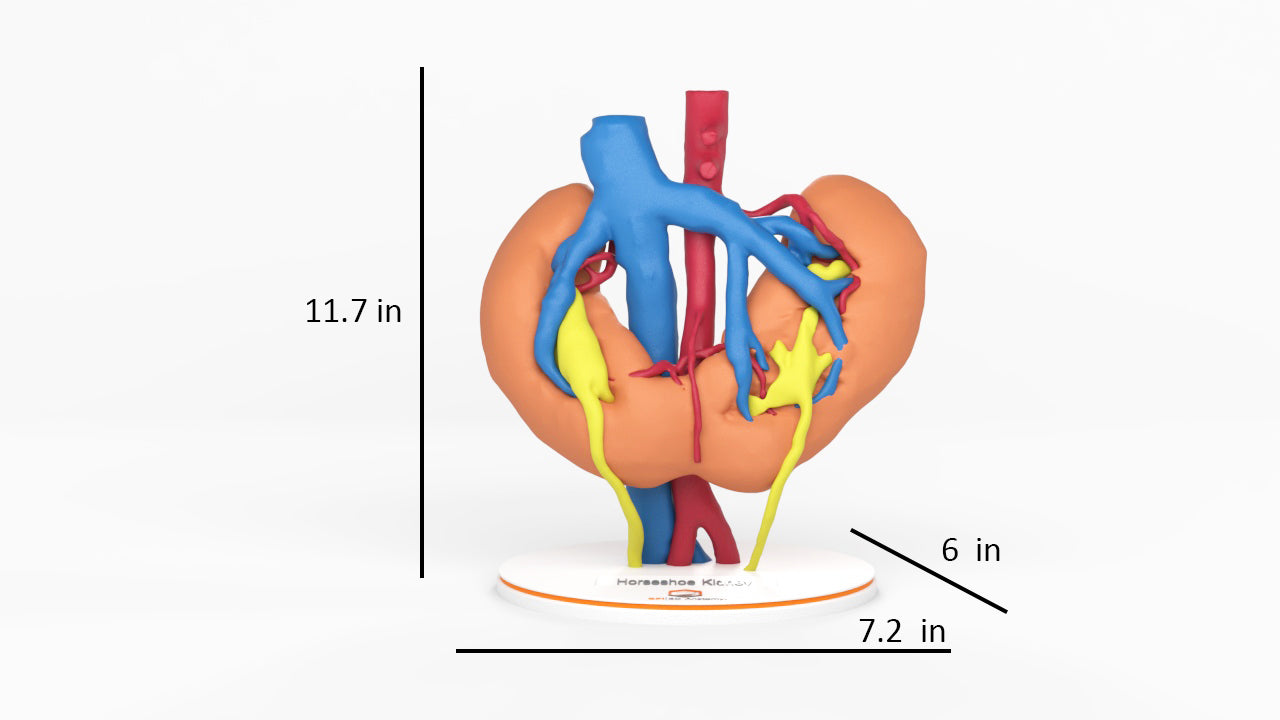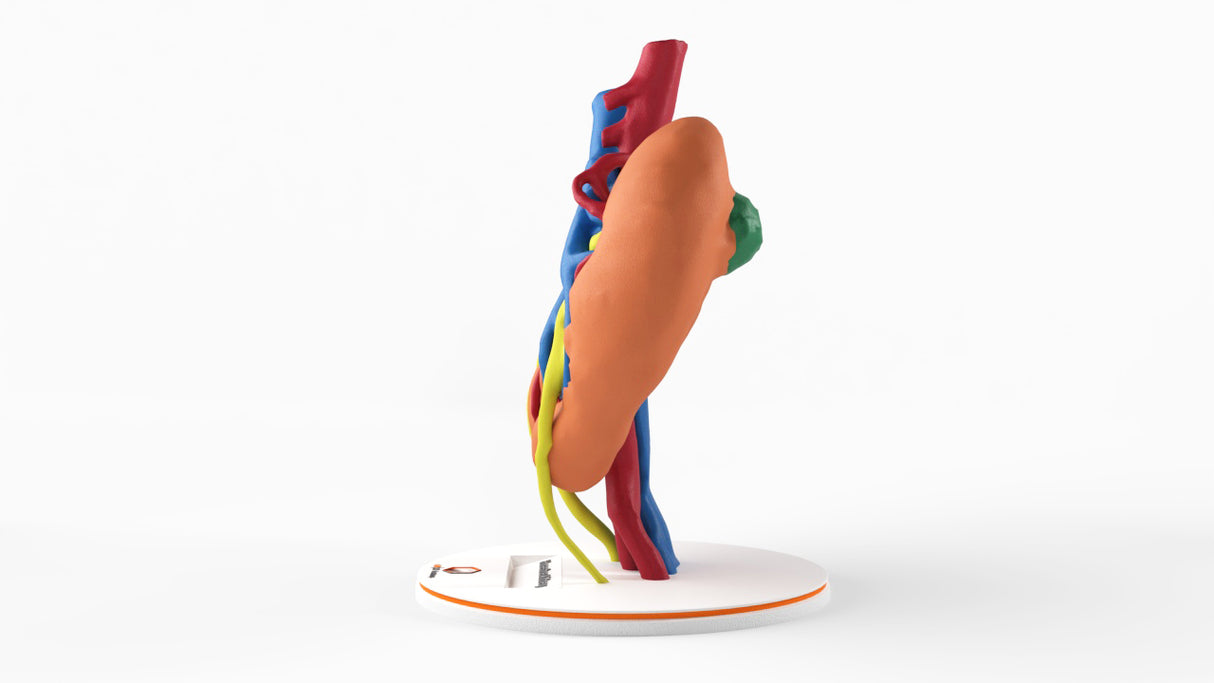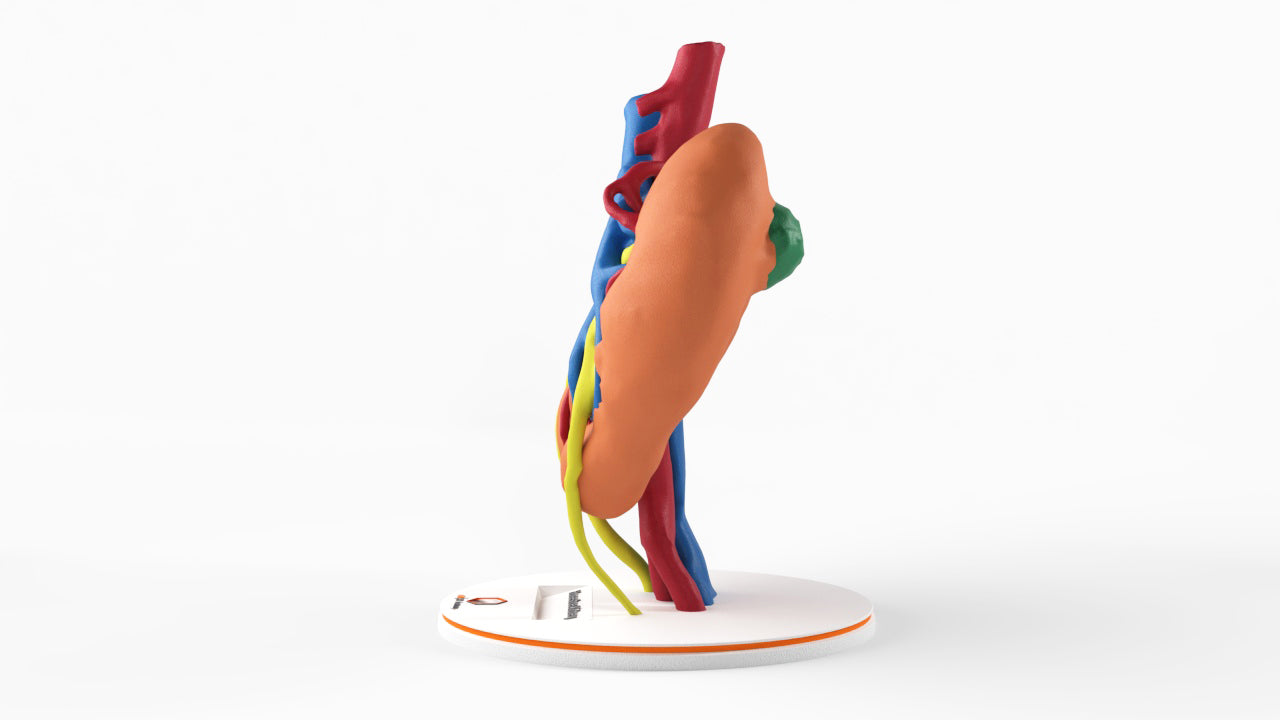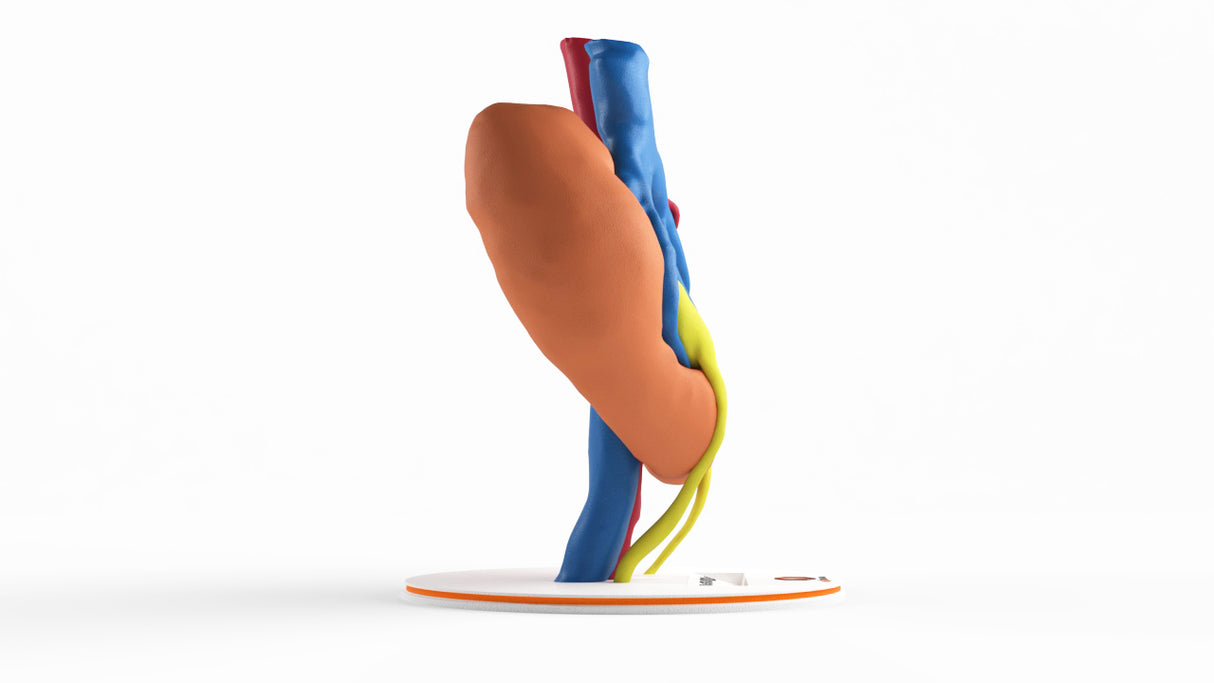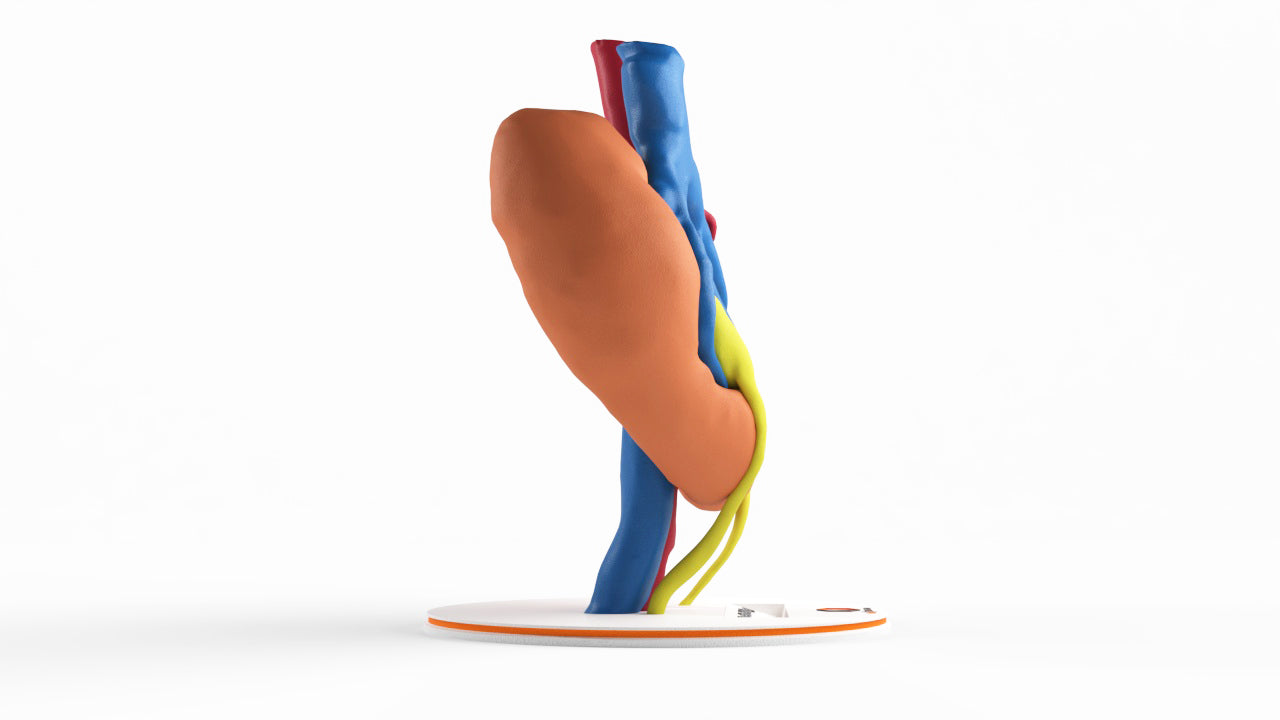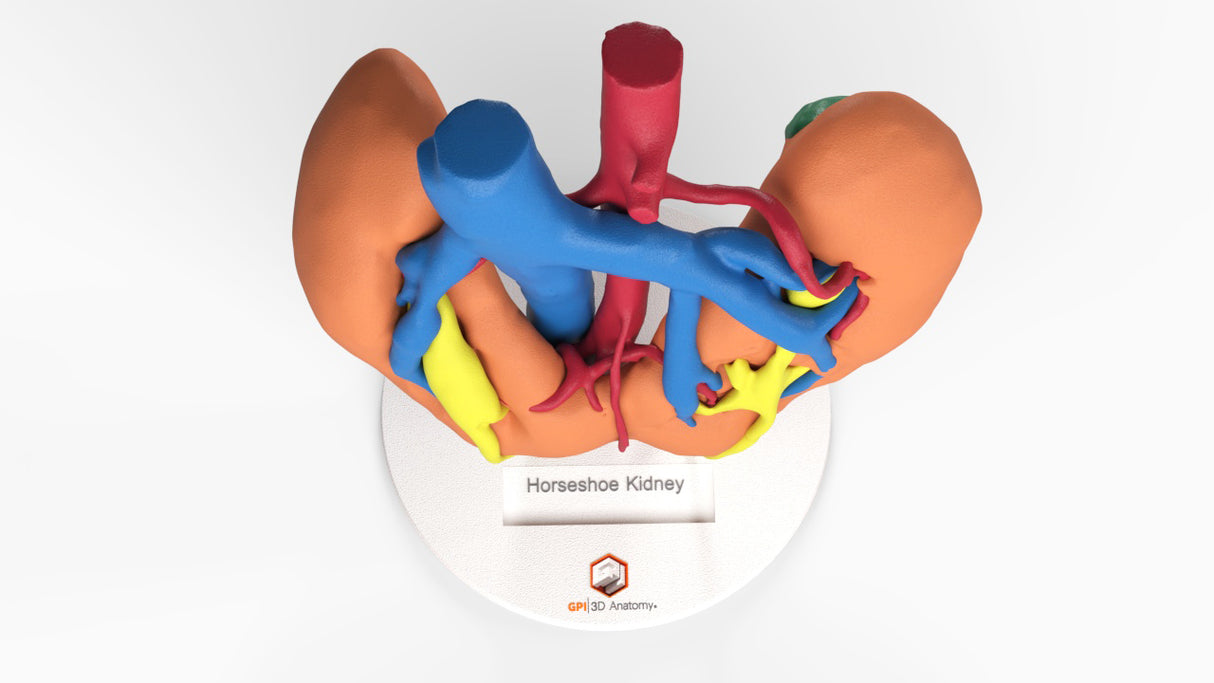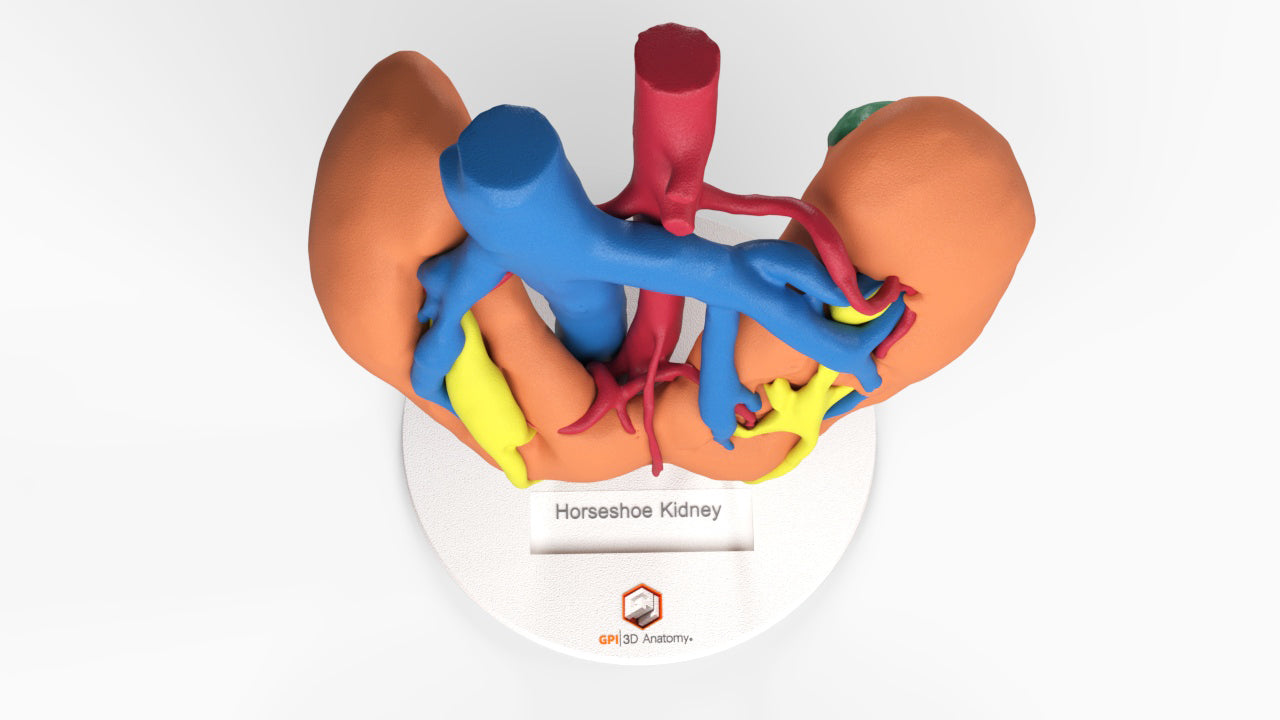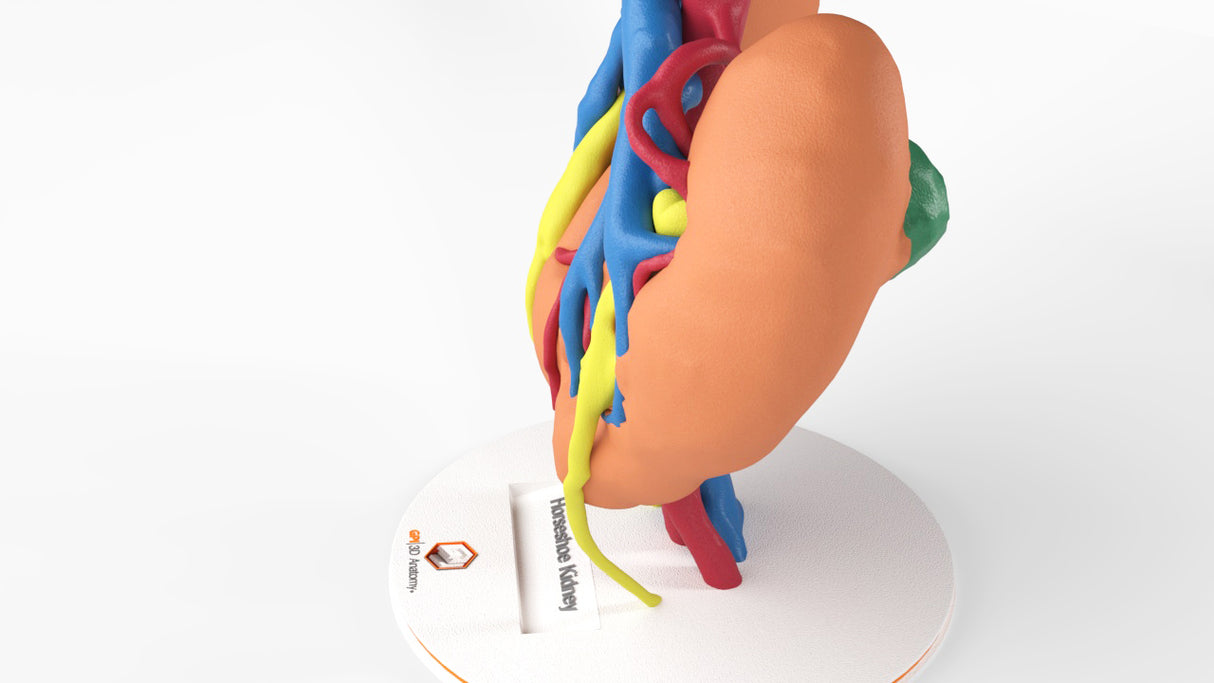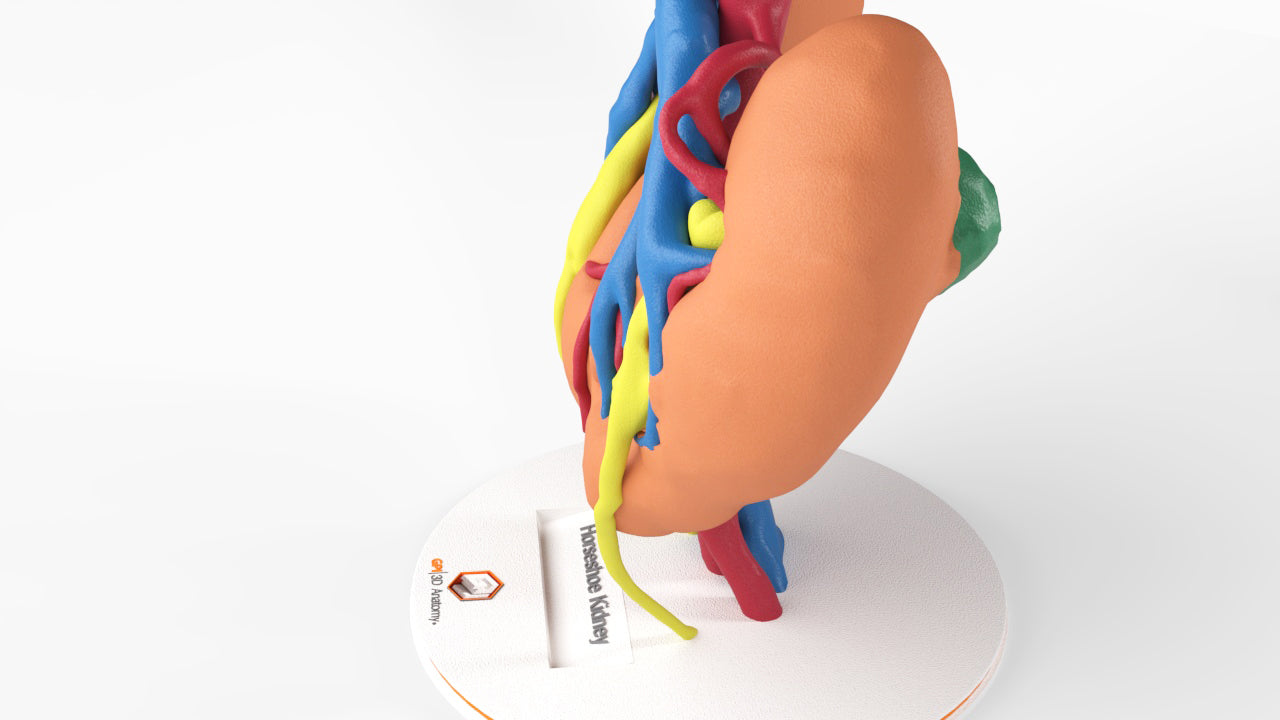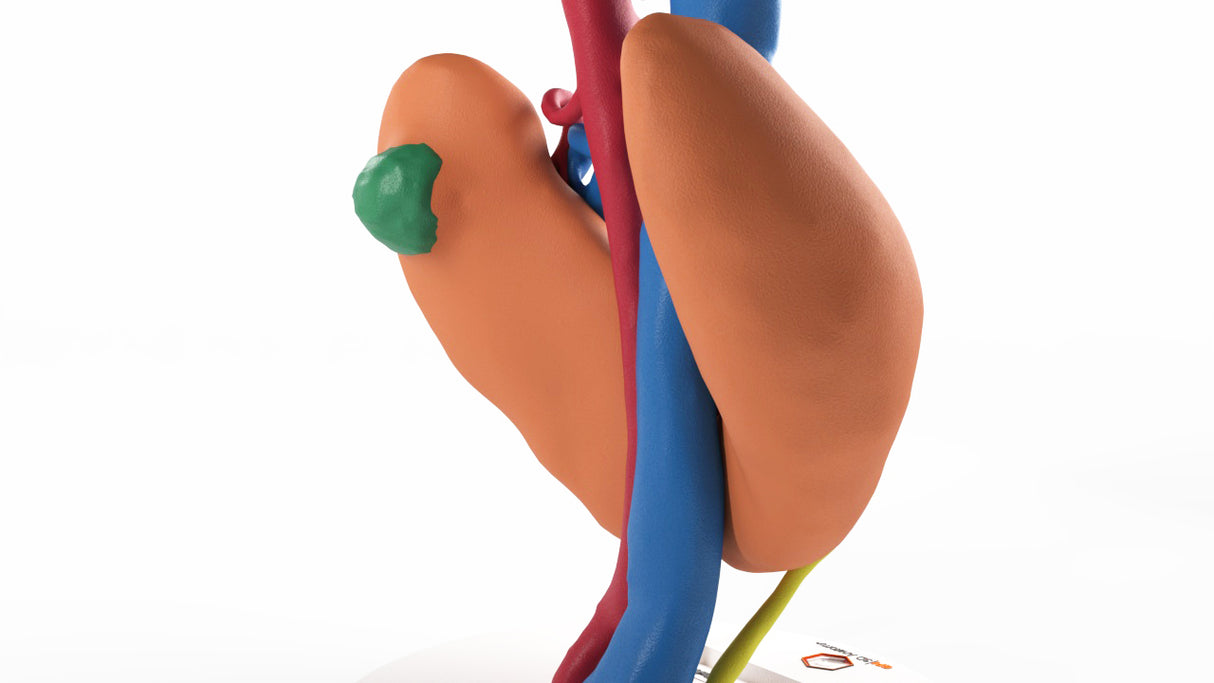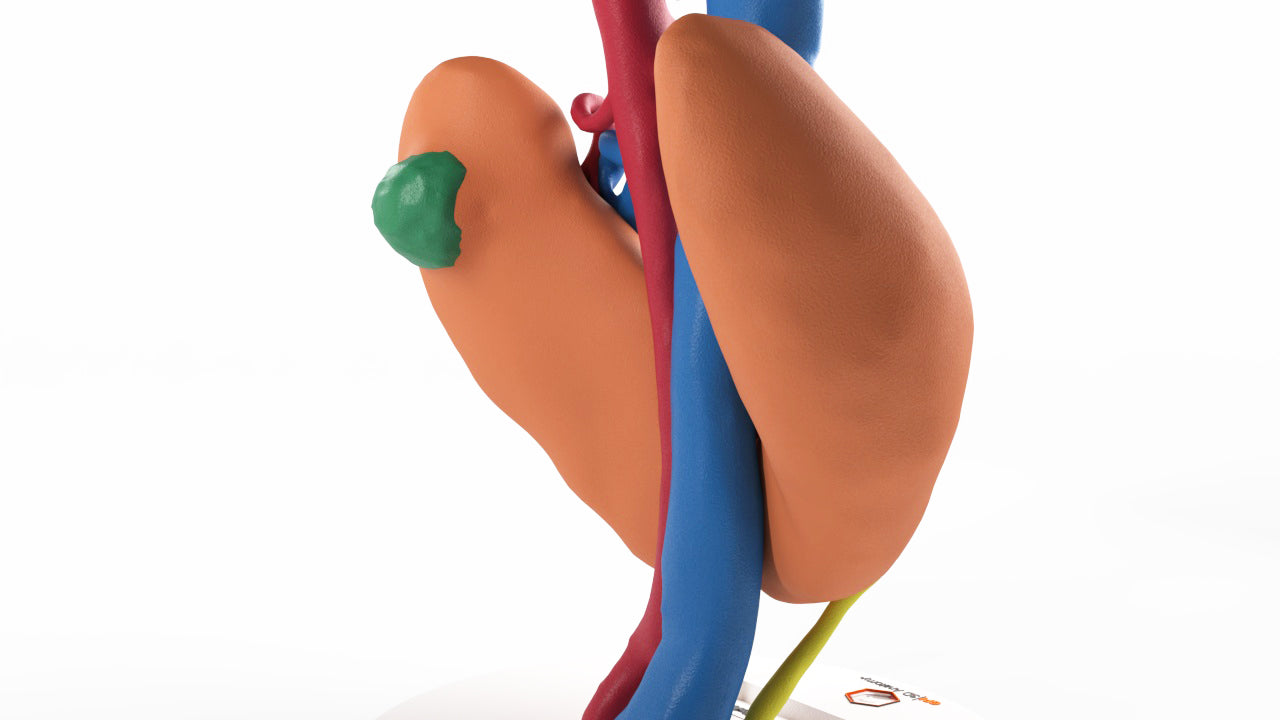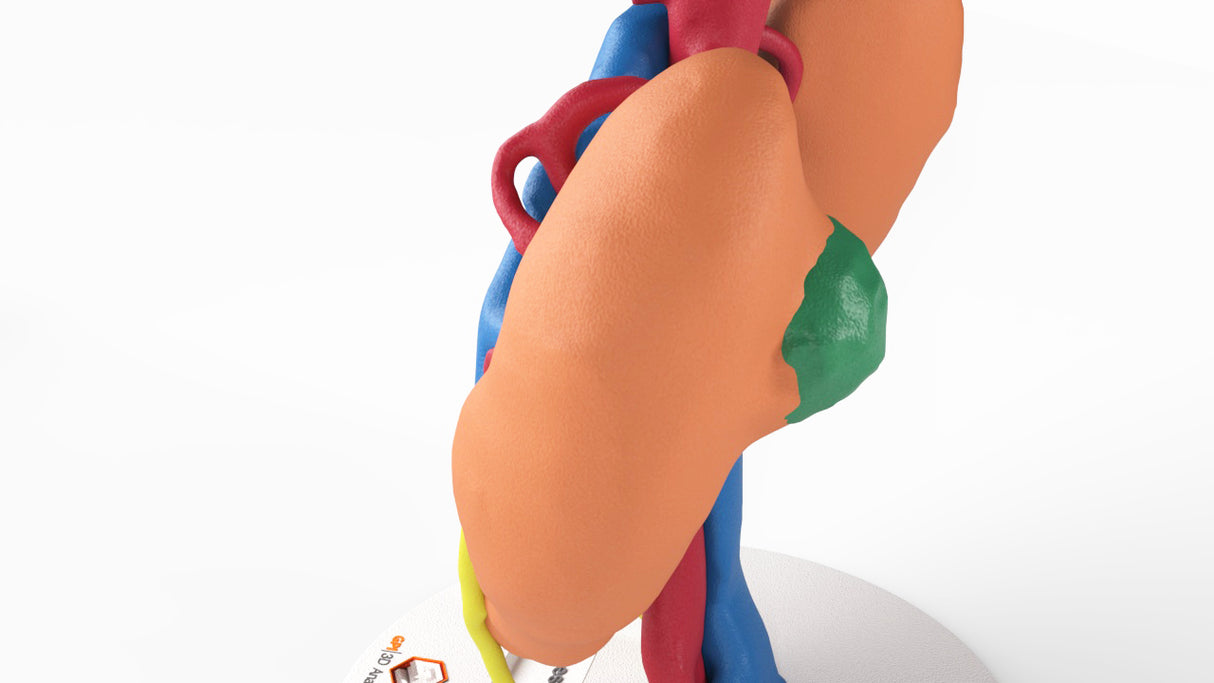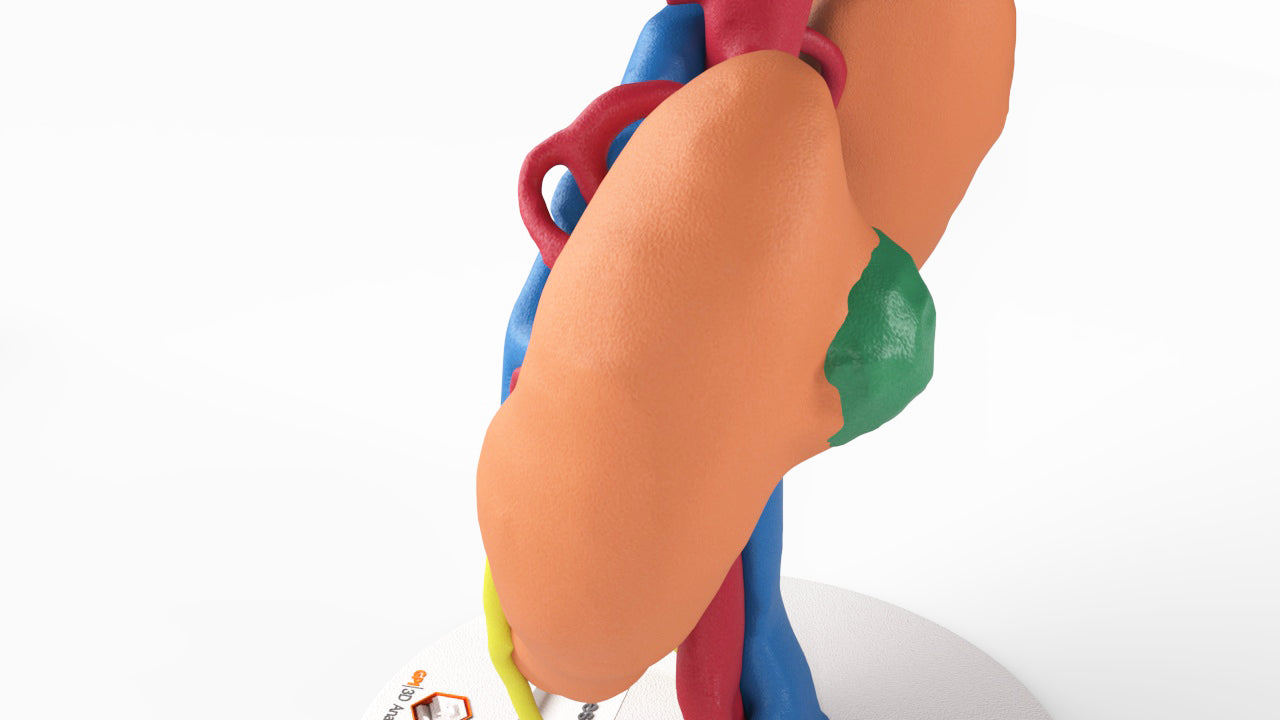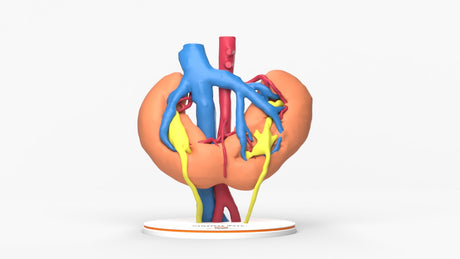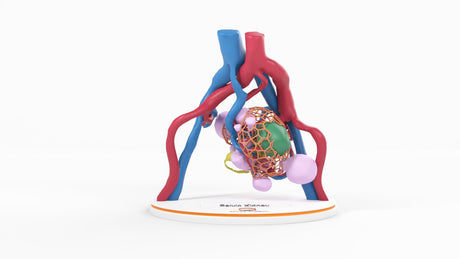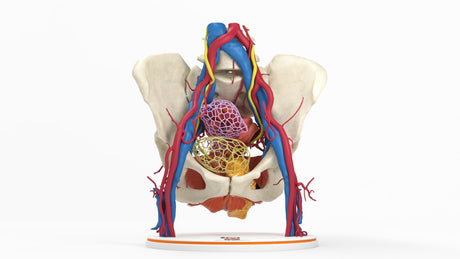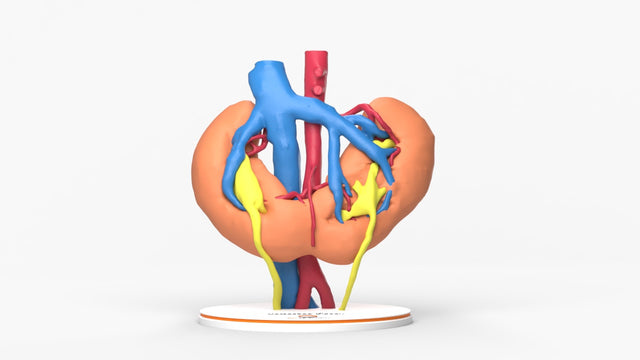Horseshoe Kidney With Renal Cell Carcinoma (RCC) – Male, 41 Years
Couldn't load pickup availability
Left upper pole renal cell carcinoma (RCC) in a patient with horseshoe kidney, or renal fusion, a congenital variant where the kidney fails to ascend to the normal position due to non-cleavage embryologically, typically restricted by the inferior mesentary artery which hooks over the isthmus.
The incidence of RCC in horseshoe kidneys is the same as the general population, and its development and treatment is not related to the defect. Large tumors with an unfavorable localization within the horseshoe kidney, unknown relation to the vessels and the renal collecting system and a thick isthmus typically require open surgery.
Designed using MRI and CT imaging scans and the latest 3D printing technologies, in collaboration with Mayo Clinic.
Dimensions & Features
About the Condition
Benefits of 3D Printing
3D-printed anatomy models offer a variety of advantages for surgical planning, patient education and medical research, including:
∙ Greater accuracy and detail than traditional anatomical models. 3D-printed models are created from digital scans of a patient's anatomy, which ensures that they are as close as possible to an exact replica of real human anatomy.
∙ More versatility than traditional anatomical models. 3D-printed models can be customized to meet your specific needs, whether planning a complex surgical procedure, training with real patient data or facilitating personalized patient communication.
Not limited to standard manufacturing, 3DP provides the best opportunity to produce accurate models in natural organic shapes, sizes, and colors; creating the best representation of real human anatomy.

